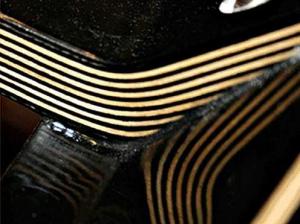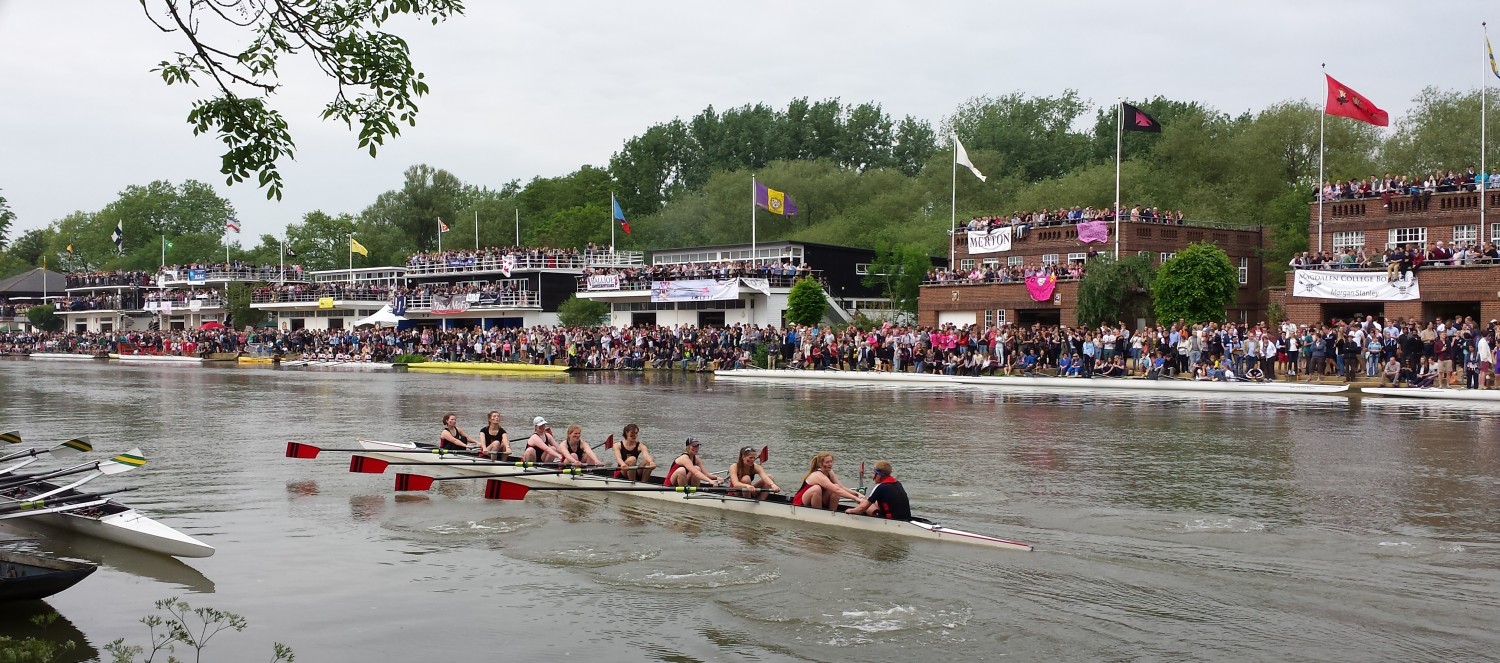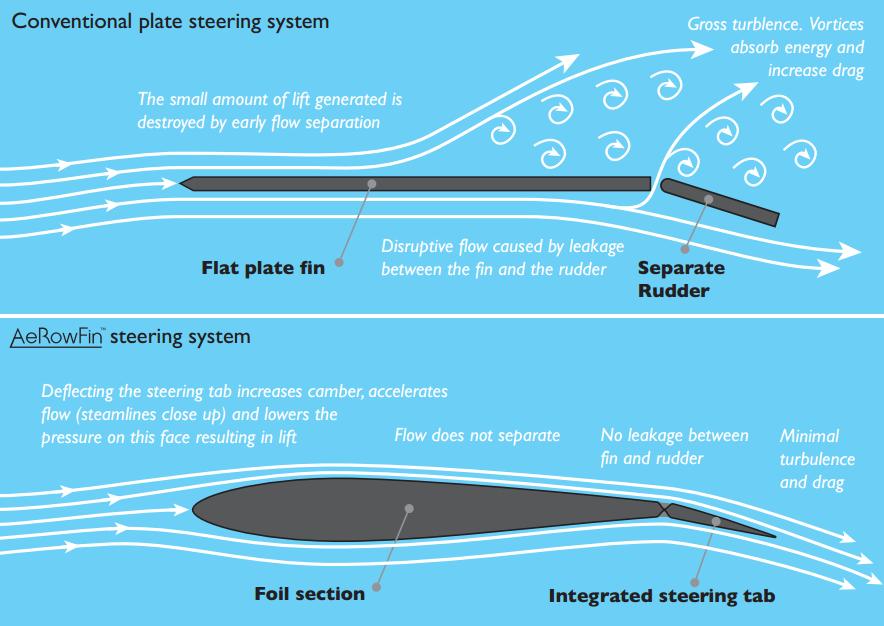
Carl Douglas Racing Shells – not traditional boat-building, by Howard Aiken
 The modern sport of rowing is blessed with some fine boat builders around the world. They are devoted to the sport and work hard to bring their customers the best equipment they can make. And yet – I have sat in boats with sharp slides which cut the skin on my calves, I have coxed eights with rudders the size of a credit card which simply don’t work and I have seen a blow from the tip of a passing blade open a long scar on a boat’s skin, deep enough to keep it off the water for weeks. All of these things I have accepted as normal, because “that’s just the way things are”. Well, let me introduce you to a boat builder who doesn’t believe “that’s just the way things are” and has built the boats to prove it. Carl Douglas (visit his website at http://www.carldouglasrowing.com/) brings to his work an insistent focus on “fitness for purpose” and he won’t allow a product out of his workshops if it fails that test.
The modern sport of rowing is blessed with some fine boat builders around the world. They are devoted to the sport and work hard to bring their customers the best equipment they can make. And yet – I have sat in boats with sharp slides which cut the skin on my calves, I have coxed eights with rudders the size of a credit card which simply don’t work and I have seen a blow from the tip of a passing blade open a long scar on a boat’s skin, deep enough to keep it off the water for weeks. All of these things I have accepted as normal, because “that’s just the way things are”. Well, let me introduce you to a boat builder who doesn’t believe “that’s just the way things are” and has built the boats to prove it. Carl Douglas (visit his website at http://www.carldouglasrowing.com/) brings to his work an insistent focus on “fitness for purpose” and he won’t allow a product out of his workshops if it fails that test.
Carl Douglas Rowing Shells (CDRS) builds high performance singles, doubles and pairs. His high-tech moulded wood composite shells typically have a glossy wood-grain finish but it would be wrong to call them wooden boats. They are as stiff and as weatherproof as 100% composite boats, and they are built to win races – which they do, regularly. Unlike 100% composite boats, a Carl Douglas shell won’t damage easily and as a result has a longer useful life.
Wood + Kevlar® = Strength (and beauty)
CDRS composite construction technology uses wood, laminated with Kevlar® and epoxy resin under heat and pressure. Carl argues that wood has evolved over 400 million years to withstand stress, fatigue and shock and is strong, durable, stiff, light and mouldable. While he can produce a standard white (or black) finish for clients who wouldn’t be seen dead in anything which looked like a wooden boat, he clearly enjoys crafting the outer skin of his shells to highlight the natural beauty of wood. While the glowing quality of the finish he and his team achieve has an undeniably old-fashioned look the technology he uses would have been unavailable fifty years ago and his team is one of the very few who can combine the hand-crafted sculpting of real wood veneers with the computer-controlled precision of 21st century hull design. Clients can choose from a wide range of customised woods, including Rosewood, Maple, Walnut and Mahogany and they can even get personalised designs inlaid in contrasting colours. Carl Douglas Racing currently has the capacity to build about fifty boats a year and each boat takes approximately three weeks from start to finish.
Re-engineering, from stem to stern
His racing shells are however, only part of the story. Carl is a Chartered Engineer and brings an engineer’s analytical approach to all aspects of boat design. This has led him to redesign many ‘standard’ boat parts to the point where everything from the bow-balls to the riggers, fins and rudders on his boats are now his own designs, and if you are willing to listen he can explain in layman’s terms exactly why each of the innovations he has made improves the competitive performance of the boat.
One example I found particularly illuminating was his AeRowFin© fin/rudder system (Figure 1). His innovation was startlingly simple. Whereas most boat makers are happy to fit fins and rudders cut from a flat sheet of metal, Carl’s design has an aerofoil profile (teardrop-shaped like the cross-section of an aeroplane’s wing). As a result, it creates less turbulence when the rudder is used resulting in more responsive steering, lower drag and greater boat speed. It is such an obvious improvement to the basic design that I was left wondering how on earth other manufacturers have got away with selling such comparatively ineffective and inefficient fin/rudder assemblies for so long. See http://www.carldouglasrowing.com/sitedata/files/AeRowFin_tech_doc_3.pdf for more details.
He was similarly dissatisfied with the riggers other suppliers were offering for his hulls, so he designed his own. Carl Douglas riggers are, he claims, a better combination of lightness, stiffness and strength than his original suppliers could offer and moreover, they deliver these characteristics with a design offering lower resistance to both wind and water. He now supplies riggers and rudders for all types of sculling and sweep-oar boats. Both products were used on the GB men’s eight which won Gold at the Sydney Olympics in 2000.
More innovation (do you notice a pattern here?) can be found at the end of the riggers. While many coaches still adjust swivel pins with (carefully applied) brute force, CDRS has developed a precision non-slip mechanism for the independent adjustment of lateral and fore/aft pitches. I particularly appreciated the thought that went into the CDRS replacement for swivel height adjusting washers. They are bright red, so you can see one if you drop it on grass or on a landing stage, and they float, so you stand a chance of retrieving them if you drop one while on the water.
Seats and slides get the same treatment – properly thought-through designs so that the slides don’t cut your legs and the seats are still comfortable at the end of an outing.
So – do you own a CDRS boat?
The hard fact is that my club doesn’t own any CDRS boats (although some individual scullers do) and I have to ask myself – why? CDRS boats are certainly premium products and they don’t currently build fours or eights, but they are priced below their equivalents from the ‘big name’ manufacturers, and my club does buy their boats. In my discussion with Carl he reminded me of a saying I remembered from my previous career in Information Technology. It was “no-one ever got fired for buying IBM”, and I think that is the key to why CDRS build 50 boats every year rather than 500. Coaches and captains put their reputations on the line every time they buy a new boat. If they go with a big name and their squad still loses, no-one is going to blame the boat. If they buy a less well-known name (and bear in mind that most rowers don’t have a wide knowledge or understanding of boats and boat-building) then they risk being blamed for their choice when their squad loses. So they’ll pay more for the big name, because even if the rigging or rudder is not quite the best and it’s so fragile that it can be expensively punctured while being lifted onto a rack, most rowers won’t mind, because they’re sitting in a boat with a famous brand name. In the meantime, it’s the scullers and small-boat specialists who really know about hulls and rigging who buy Carl Douglas Racing boats. And ill-informed commentators and spectators will continue to be surprised to see these ‘wooden’ boats winning at regattas and head races around the world.
The company
Carl Douglas Racing Shells was founded in 1973 and is now the longest – established British boat builder. Over the past forty years, Carl and his team, based at the Harris Boatyard in Chertsey UK, have built an enviable reputation for the quality of their products and their service to customers. Their engineering-led practice has pioneered innovation in all aspects of boat-building from design to manufacturing and equipment. This and their expertise in computer-controlled machining has established them as a supplier of precision components to many of the ‘big name’ manufacturers. They build a range of high performance singles, doubles and pairs to their own designs in wood/Kevlar® composites, resulting in boats of outstanding ‘fitness for purpose’ – robust, reliable and beautiful to look at.
Some facts:
1. Each single takes between 120 and 150 man hours to build, depending on client specification
2. Pairs and doubles take about 50% more hours
3. The wood used is harvested only at the tree’s maturity and can be anything from 25 to 500 years old, depending on species
4. Building in wood means the boats are ecologically sound:
a) harvested at maturity, the wood used is efficiently converted into veneers
b) the exceptional durability of Carl Douglas boats gives them an exceptionally long working life
c) at end of life they are easily re-cycled into energy and safely re-usable by-products
5. A Carl Douglas single (including riggers) weighs 14kgs, a double weighs 25kg
6. Their wood is seasoned for 2 to 20 years before use
7. CDRS only use wood bearing FSC (Forest Stewardship Council) certification
8. While about 75% of a Carl Douglas shell is wood, they also use man-made materials including Kevlar®, carbon, glass fibre, resins, ultra-tough man-made finishes and metals – but always with the objective of maximising performance and endurance
For more information, visit www.carldouglasrowing.com
All images courtesy of Carl Douglas Racing Shells.
The offline version of this article was originally published in Issue 3 of Row360 Magazine row-360.com

